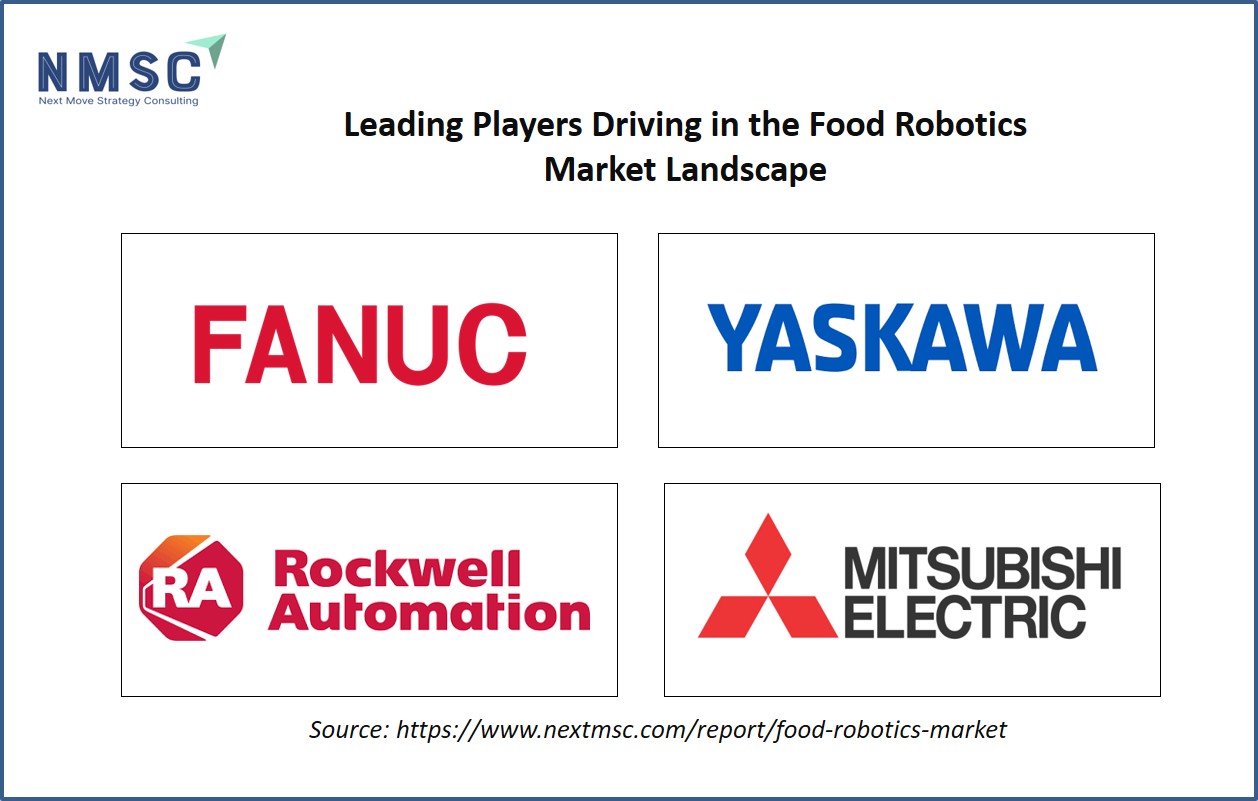Food Robotics: Revolutionizing Fast Food and Beyond
Published: 2025-09-18

Imagine walking into a restaurant where your burger is crafted in 27 seconds by a robot, or dining at a place where mechanical chefs whip up meals with precision. This is not science fiction—it is the reality of food robotics in 2025. From automated burger assembly to robotic restaurants, technology is reshaping how we prepare and serve food.
The Rise of Robotic Fast-Food Prep
Fast food has always been about speed and consistency, but human limitations often create bottlenecks. Enter food robotics. At the forefront is BurgerBots, a collaboration between ABB Robotics and entrepreneur Elizabeth Truong, launched in Los Gatos, California, in 2025. This innovative concept uses ABB’s IRB 360 FlexPicker® and YuMi® collaborative robot to create made-to-order burgers with industrial precision .
According to the report by Next Move Strategy Consulting, the Food Robotics Market size is predicted to reach USD 5.36 billion by 2030 with a CAGR of 9.7% from 2022-2030.
The BurgerBots system operates in a compact robotic cell, where a freshly cooked patty is placed on a bun, moved via a QR-coded conveyor, and topped with ingredients by the FlexPicker®. The YuMi® robot finalizes the assembly, delivering a burger in just 27 seconds. This setup not only ensures speed but also maintains hygiene, as robots handle food with minimal human contact. Additionally, the system integrates real-time inventory tracking, monitoring ingredients like onions and lettuce to streamline kitchen operations.
Why It Matters
The hospitality industry faces significant challenges, including high staff turnover (75% of restaurant employees leave within a year) and rising labor costs. Automation addresses these by taking over repetitive tasks, allowing staff to focus on customer service. A 2025 ABB survey found that 89% of hospitality managers and 73% of workers support robotic automation, with 67% agreeing it reduces dull, dirty, or dangerous tasks.
Summary
-
Speed and Precision: Burgers assembled in 27 seconds with consistent quality.
-
Hygiene: Robotic handling minimizes human contact, ensuring food safety.
-
Labor Relief: Automation reduces repetitive tasks, addressing staff turnover.
Food robotics, like BurgerBots, sets a new standard for fast food efficiency and hygiene.
Robotic Restaurants Go Mainstream in China
Beyond burger assembly lines in California, entire robotic dining experiences are emerging globally. In August 2025, Beijing unveiled its Robot Mall, one of the first large-scale outlets dedicated to consumer and humanoid robots. Adjacent to the mall is a robot-themed restaurant, where diners are greeted by automated servers and meals are cooked by mechanical chefs—showcasing how robotics is becoming a practical part of daily life.
China’s motivation is clear: with an aging population and slowing economic growth, the government is investing heavily in robotics and AI to maintain productivity. More than 100 robot models are available at the Robot Mall, ranging from mechanical butlers to lifelike replicas of Albert Einstein, with prices stretching from about $278 to several million yuan. The initiative is backed by over $20 billion in subsidies and a forthcoming 1 trillion yuan fund for robotics and AI startups.
Who Are the Key Players Driving the Food Robotics Market?
The market features prominent players such as FANUC Corporation, ABB Group, KUKA AG, Yaskawa Electric Corporation, Omron Corporation, Staubli International AG, Bear Robotics, Rockwell Automation Inc., Mitsubishi Electric Industries, Denso Corporation, Fuji Robotics, Kawasaki Heavy Industries Ltd., Doosan Robotics Inc., Universal Robots A/S, and Epson. These companies are actively engaged in research and development, technological innovations, and strategic collaborations to strengthen their product portfolios, expand growth opportunities, and broaden their global presence.
Why It Matters
Robotic restaurants are more than a novelty—they’re proof of how automation can enhance both efficiency and customer experience. By handling repetitive kitchen and serving tasks, robots shorten wait times, maintain food consistency, and reduce human exposure to dull, dirty, or hazardous work. This echoes findings from ABB’s hospitality survey, where 67% of workers agreed that robotics can improve workplace safety and reduce routine strain.
Key Takeaways
-
Global Adoption: Robotic dining is moving from trial phase to mainstream, with China taking the lead.
-
Operational Efficiency: Robots speed up cooking and service while ensuring consistent quality.
-
Massive Investment: China’s $20 billion in subsidies and trillion-yuan fund highlight robotics as a national priority.
Benefits and Challenges of Food Robotics
Food robotics offers transformative benefits but also faces hurdles. Here’s a breakdown:
|
Aspect |
Benefits |
Challenges |
|
Efficiency |
Robots like BurgerBots assemble meals in seconds, boosting throughput. |
High initial costs for robotic systems can deter small businesses. |
|
Consistency |
Precise automation ensures uniform quality across orders. |
Maintenance and spare parts require specialized services. |
|
Hygiene |
Minimal human contact reduces contamination risks. |
Staff training for robot operation can be complex. |
|
Labor |
Automation eases repetitive tasks, improving job appeal. |
Resistance to change among some workers (though 73% support robotic automation). |
Summary
-
Cost Savings: Reduced labor costs and better inventory management.
-
Scalability: Systems like BurgerBots are designed for high-traffic venues.
-
Hurdles: High costs and maintenance needs pose challenges.
Food robotics balances significant benefits with implementation challenges, requiring strategic investment.
The Future of Food Robotics
The trajectory of food robotics is clear: it is moving from novelty to necessity. Elizabeth Truong predicts that within five years, most restaurants will adopt some form of automation, driven by the need for efficiency and cost control. Projects like ABB’s collaboration with RoboEatz on autonomous kitchens and Makr Shakr’s robotic bartenders show the versatility of robotics in hospitality. Meanwhile, events like Beijing’s World Humanoid Robot Games highlight global enthusiasm for robotic innovation.
Summary
-
Growth: Automation will become standard in restaurants by 2030.
-
Versatility: From burgers to bartending, robotics is expanding its role.
-
Global Push: China’s investment underscores robotics’ rising importance.
Food robotics is poised to become a cornerstone of the hospitality industry.
Next Steps for Embracing Food Robotics
For restaurant owners and hospitality professionals looking to integrate food robotics, here are actionable steps:
-
Research Solutions: Explore systems like BurgerBots or RoboEatz for scalability and cost-effectiveness.
-
Start Small: Pilot a single robotic cell to test efficiency and staff response.
-
Train Staff: Invest in training to ensure smooth operation and maintenance.
-
Monitor Trends: Stay updated on innovations via events like the World Robot Conference.
-
Evaluate ROI: Calculate long-term savings against initial costs to justify investment.
Food robotics is not just a trend—it is the future of fast food and dining, blending technology with human creativity to serve up unforgettable experiences.
About the Author
 Nitrishna Sonowal is a skilled SEO Executive and Content Writer with over 3 years of experience in the digital marketing industry. With a deep understanding of the ever-evolving digital landscape, she blends analytical insights with creative storytelling to deliver impactful digital solutions. She creates content that resonates with both clients and readers alike. Outside of work, she enjoys dancing, baking, and traveling to new places.
Nitrishna Sonowal is a skilled SEO Executive and Content Writer with over 3 years of experience in the digital marketing industry. With a deep understanding of the ever-evolving digital landscape, she blends analytical insights with creative storytelling to deliver impactful digital solutions. She creates content that resonates with both clients and readers alike. Outside of work, she enjoys dancing, baking, and traveling to new places.
About the Reviewer
 Sanyukta Deb is a skilled Content Writer and Digital Marketing Team Leader, specializing in online visibility strategies and data-driven campaigns. She excels at creating audience-focused content that boosts brand presence and engagement, while also pursuing creative projects and design interests.
Sanyukta Deb is a skilled Content Writer and Digital Marketing Team Leader, specializing in online visibility strategies and data-driven campaigns. She excels at creating audience-focused content that boosts brand presence and engagement, while also pursuing creative projects and design interests.

















Add Comment